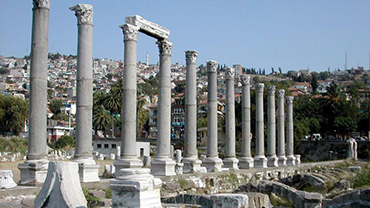
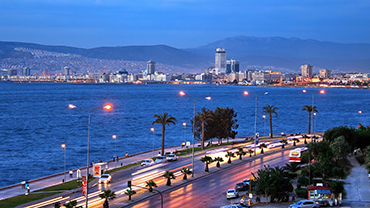
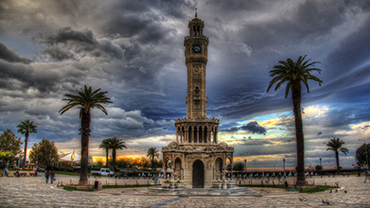
Smyrna (izmir)
Smyrna was an ancient city located at a central and strategic point on the Aegean coast of Anatolia. Smyrna stood out due to its favorable port conditions, ease of defense and good internal connections. The ancient city is located at two points in the modern city of Izmir, Turkey. The first settlement, probably founded by indigenous inhabitants, emerged as one of the main ancient Greek settlements in western Anatolia during the Archaic period. The second, whose foundation is associated with Alexander the Great, grew to metropolitan size during the Roman Empire. Most of the ruins today date to the Roman period, the majority of them after an earthquake in the 2nd century AD.
The original city was founded in the third millennium BC (in today's Bayraklı) and shared the most advanced culture of Western Anatolia with Troy. In 1500 BC, it came under the influence of the Hittite Empire in Central Anatolia. In the first millennium BC, Izmir, then known as Smyrna, became one of the most important cities of the Ionian Federation; Homer is believed to have lived here during one of the city's most brilliant periods. This period ended with the conquest of the city by the Lydians around 600 BC, and Izmir remained little more than a village throughout the Lydian and subsequent 6th century BC Persian rule. In the 4th century BC, with the encouragement of Alexander the Great, a new city was built on the slopes of Mount Pages (Kadifekale). From the first century BC, the Roman period of Izmir gave birth to its second great era. Byzantine rule began in the fourth century and lasted until the Seljuk conquest in the 11th century. In 1415, under Sultan Mehmet Çelebi, Izmir became part of the Ottoman Empire.
Known in Turkish as "Beautiful Izmir", the city of more than 4 million inhabitants sits at the head of a long, narrow bay, surrounded by ships and yachts. The climate is mild and in the summer months, constant and refreshing sea breezes temper the heat of the sun. Behind the palm-lined promenades and avenues that follow the coastline, the city rises gently in horizontal terraces to the slopes of the surrounding mountains. Izmir is Turkey's third largest city and its port is second only to Istanbul. A cosmopolitan and vibrant city all year round, Izmir comes alive during the International Art Festival (June/July) and the International Fair (August/September).
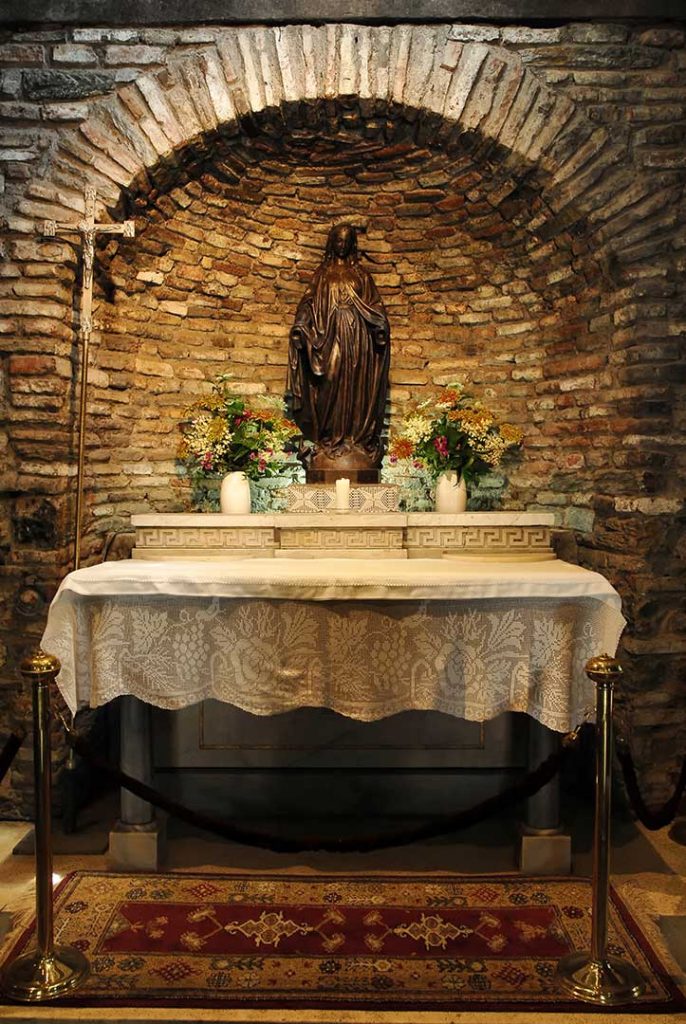
Virgin Mary's House
Located on the top of the "Bülbül" mountain 9 km from Ephesus, this house and the tomb of the Virgin Mary have a magnificent atmosphere hidden in the greenery. It is a place where Mary may have spent her last days. Indeed, she may have come to the region with St. John, who spent several years in the area spreading Christianity. Mary preferred this remote location to living in a crowded place.
Paul VI was the first Pope to visit the site in the 1960s. Later, in the 1980s, Pope John Paul II declared the Shrine of the Virgin Mary a place of pilgrimage for Christians during his visit. It is also visited by Muslims who recognize Mary as the mother of one of their prophets. Every year on August 15, a ceremony is held to commemorate the Assumption of Mary.
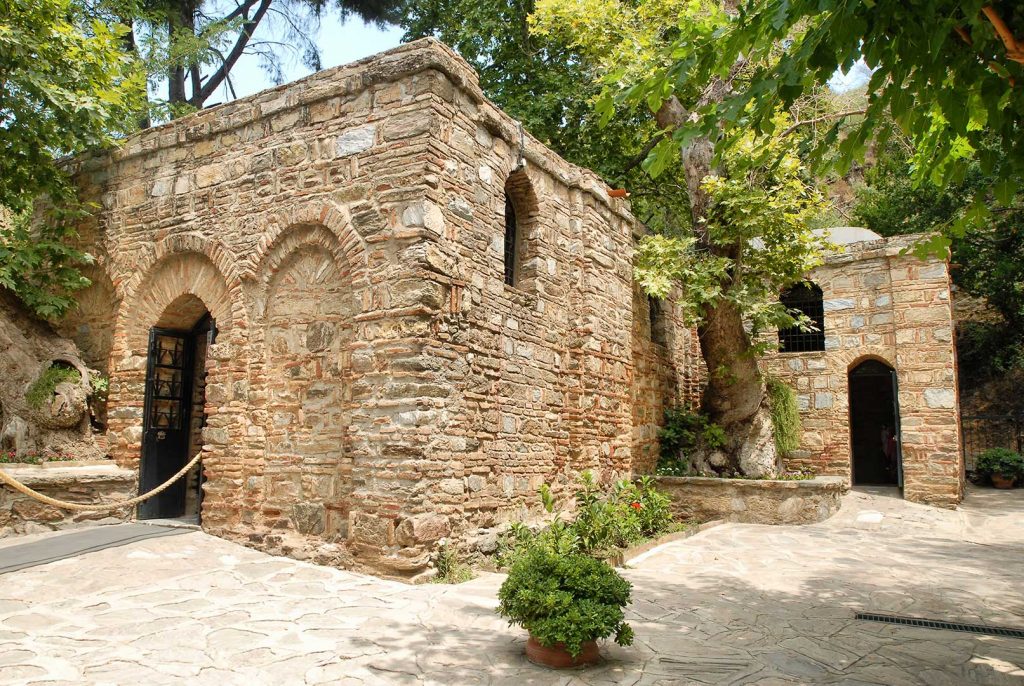
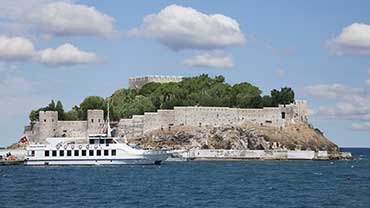
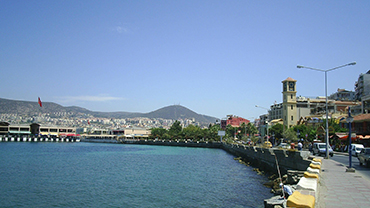
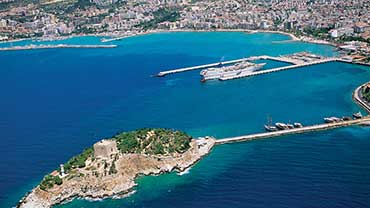
Kusadasi
Kusadasi, a wonderful port city within the borders of Aydin province of Turkey, is located 71 kilometers northwest of Aydin Center. It is approximately 95 kilometers from the center of Izmir and only 20 kilometers from the ancient city of Ephesus. The city of Kusadasi, on the shores of the Aegean Sea, is one of the most important tourist centers in Turkey.
Kusadasi Bay, named after the city, and its immediate surroundings (having been home to many different civilizations) have been recognized as a center rich in art and culture. The Dilek Peninsula National Park, established in 1966 on an area of 25 hectares, is a particularly interesting spot with its extensive flora/fauna.
The number of tourists arriving in Kusadasi by cruise ship in 2013 was approximately 950,000 and this number should include approximately 600,000 tourists arriving by car and bus.



Bergama
Pergamon, originally Pergamon, is located 118 km (73 mi) north from the exit point of Konak Square, the traditional center of Izmir, and 27 km (17 mi) inland from the nearest seashore in the western district of Dikili.
Known for its cotton, gold and fine carpets, it was the ancient Greek and Roman cultural center of the Pergamon Province; its wealth of ancient ruins continues to attract tourists today. Located on a promontory north of the Bakırçay (Caicos) river, 26 kilometers (16 miles) from the Aegean Sea, Bergama has a population of about 65,000. The ruins of the ancient city of Pergamon lie to the north and west of the modern city; Roman Pergamon is thought to have had a population of around 150,000 at its height in the 1st century AD.
The Great Altar of Pergamon is in the Pergamon Museum in Berlin, Germany. The pedestal of this altar remains at the top of the Acropolis. Perhaps believed to have been dedicated to Zeus, it is the altar that John of Patmos referred to in the book of Revelation as the "Throne of Satan" (Revelation 2:13). A smaller frieze on a wall inside the Pergamon Altar depicts the life of Telephos, son of Heracles and legendary founder of Pergamon
Other important structures that still exist on the upper part of the Pergamon Acropolis are as follows:
- The Hellenistic Theater has a seating capacity of 14,000 people. This theater had the steepest seating arrangement of any known theater in the ancient world.
- Sanctuary of Trajanus (also known as Trajaneum)
- Athena Sanctuary
- Pergamon Library
- Royal palaces
- Heroon - a temple worshipped by the kings of Pergamon, especially Attalus I and Eumenes II.
- Temple of Dionysus
- Upper Agora
- Roman baths complex
- Diodoros Pasporos heroon
- Armories
Pergamon's important ruins include the Sanctuary of Asclepius, called the Asclepion, a temple dedicated to an ancient Greek god of healing, and the Red Basilica complex above the Selinus River, a 2nd century AD structure probably built by Hadrian. The town also has an archaeological museum.
